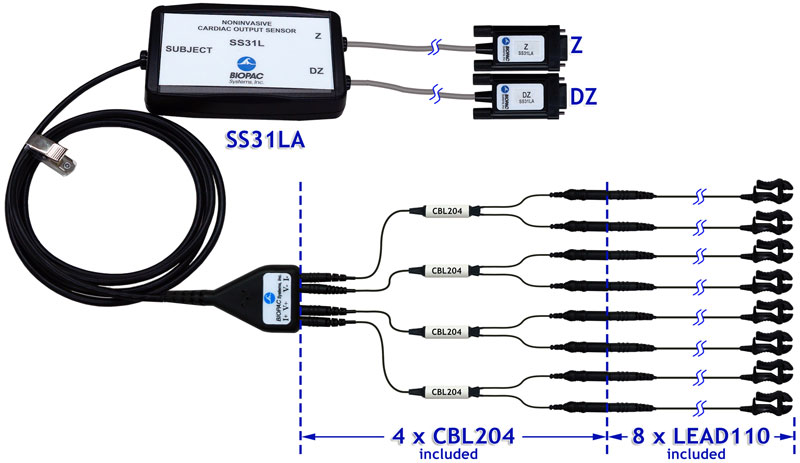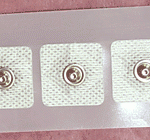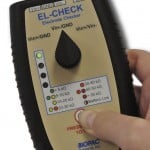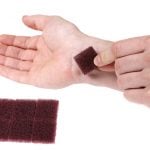The SS31LA incorporates a precision high-frequency current source, which injects a small (400 µA rms @ 100 kHz sine wave) current through the measurement tissue volume defined by the placement of a set of current source electrodes. A separate set of monitoring electrodes then measures the voltage developed across the tissue volume. Because the current is constant, the voltage measured is proportional to the characteristics of the biological impedance of the tissue volume.
See BSL PRO Lesson H21 Impedance Cardiography for sample setup and data, as well as an extensively updated physiological introduction that covers Cardiac Output as a Function of Stroke Volume and Heart Rate, Cardiac Output as Related to Mean Arterial Pressure and Peripheral Resistance, How to Determine Cardiac Output, Principles of Impedance Cardiography (ICG), and Ideas for eliciting cardiovascular responses through physical maneuvers and psychological tasks.
Note: SS31LA replaces the SS31L, which had lead connectors designed for strip electrodes, such as EL506, which were discontinued due to manufacturing limitations.










Stay Connected